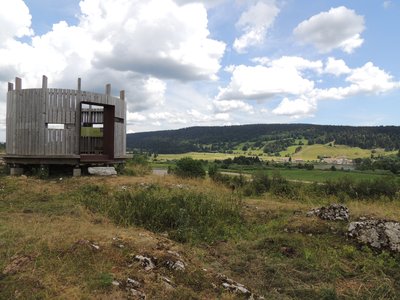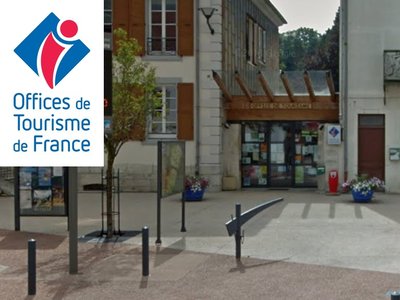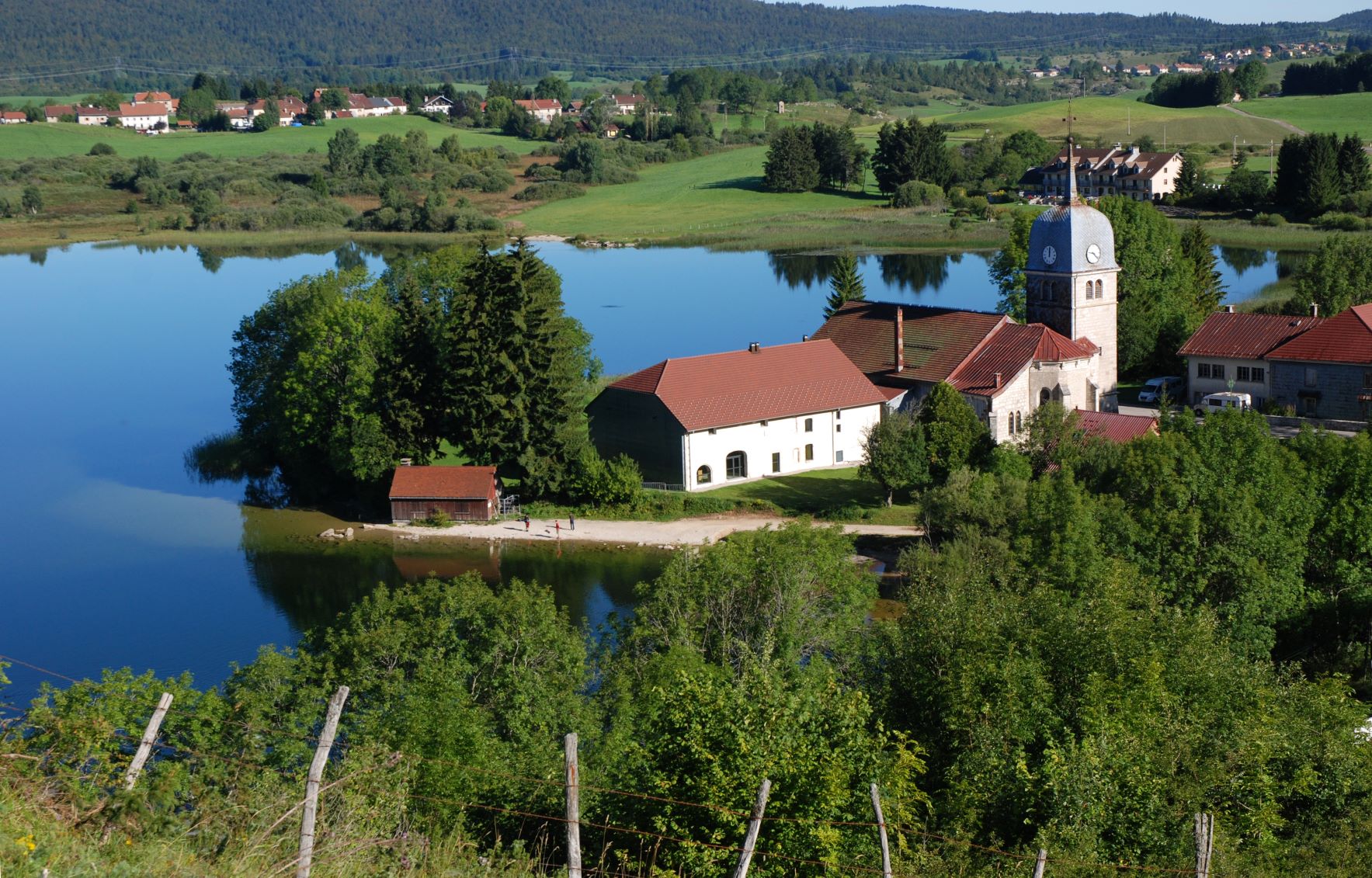
Around the lake
A journey to the heart of the water... to the heart of the history of Grandvaux. Discover the calm of the landscapes all around the Lac de l'Abbaye. Multiply the breaks and unlock the secrets of the lake and its peat bogs from the image silo.
This Jurassic Velo Tours route has digital guidance only. You will not find any markings on the ground. Let yourself be guided with the Jurassic Vélo Tours app, which can be downloaded for free from Google Play Store and App Store. As you go along, signposts will indicate points of interest to discover.
6 points of interest
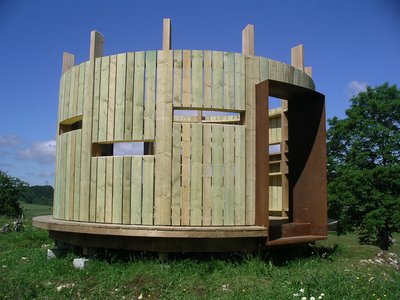
Silo à images - PNRHJ / Gilles Prost Pastoralism and agricultureLes Guillons Silo of pictures
The Silo of pictures offers a comprehensive understanding of the lake, the Grandvaux plateau and the “Lapiaz des chauvins”. When you leave the silo of pictures, agricultural activities, the lake and the peat bogs will no longer be a mystery to you.
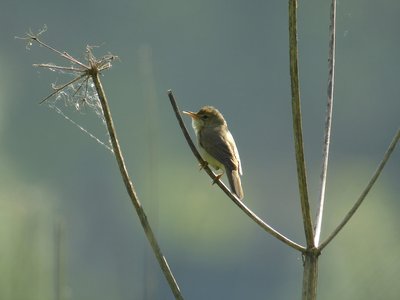
Rousserolle verderolle - Fabrice Croset FaunaThe marsh warbler
A migratory bird, this passerine spends winters in Africa, south of the equator. It only returns to the Jura mountains between mid-May and the beginning of August. The marsh warbler lives in more or less marshy prairies with high grass and scattered with bushes, where the male perches itself to sing. Their nest is made of dry grass suspended at mid-height from herbaceous stems. This species is exclusively insectivore (feeds on insects). The European champion of imitation, a male marsh warbler can imitate 80 species with its song, with the known record to be 212!
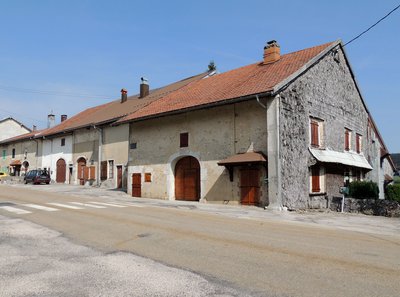
Mitoyenneté des maisons - PNRHJ - F. Jeanparis History & HeritageAdjoining houses
In hamlets, adjoining farms were often lived in by the same family (several brothers for example). However, each family was still independent and provided for its own needs. The sobriety of the home’s architecture should not detract from the quality of these constructions: the use of cut stone to frame windows, the quality of the framework, the cut and aged lintels, etc.
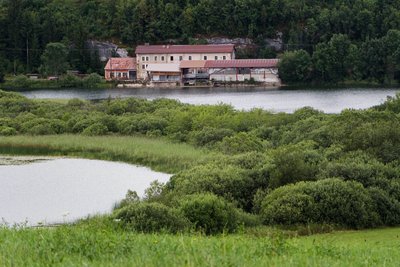
Scierie de l'Abbaye en Grandvaux - PNRHJ / Nina Verjus History & HeritageThe mill and sawmill of l’Abbaye en Grandvaux
Since the Middle Ages, monks have used the driving force provided by the lake’s waterfall to work the grinding wheels in the Abbaye’s mill, which was once located where the current sawmill now stands. The water wheel was actioned by a vertical 8-meter-high waterfall. No doubt this first set-up lacked power and a 5-meter dyke was likely constructed to increase the height of the drop and the volume of water in the lake. The lake’s current water level bares no resemblance to its water level during the 6th century; this means it is difficult to locate the original priory. When activity at the mill came to an end (due to a lack of grain to grind!), a sawmill was established on the same site, and turbines replaced the pre-existing wheel. The calm waters in the lake turned into a power source and the facilities that are still in place attest to the different activities that have since developed around the lake.
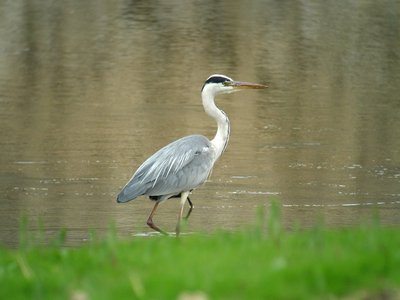
Héron cendré - Fabrice Croset FaunaThe grey heron
Easy to recognise, the grey heron can be seen hunting along the edge of lakes and in the marshes in the search for amphibians and fish, or even in the middle of agricultural prairies on the lookout for voles. Like all herons, it flies with its neck bent and its legs outstretched, which sets it apart from storks and cranes. It nests in a small colony, called a heronry.
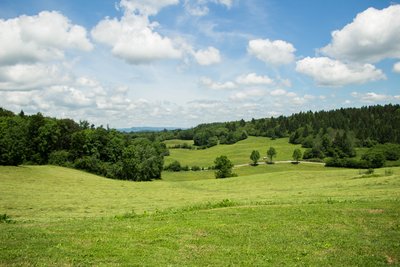
Vue des Jeannez sur les forêts du Grandvaux - (PNRHJ / N.VERJUS) Natural environmentsMixed fir, spruce and beech forests
In the Jura, the montane zone is located at an altitude between 900 and 1700 metres. In this area, forests are mostly comprised of fir trees, spruces and beech trees. Beech, which is still sometimes regionally referred to as “fayard”, is well suited to the mountainous climate. This tree produces beechnuts, which are eaten by game. The hard wood of the beech tree used to be often used by “boisseliers”, wood turners. Today, it is excellent for use as firewood.
In the High-Jura, these mixed forests are usually managed according to a selection system. Unlike plantations, this method of management allows trees of different species and ages to grow on the same site, thereby ensuring increased biodiversity.
Description
Before you leave, don't hesitate to download the free Jurassic Vélo tours app to let you guide you along the way.
From the tourist office, go up Rue de Genève then Rue Delezay to the west, cross the level crossing and reach Chemin des Buissonnets on the right.
Follow this then turn right onto the road to Salave.
At the next crossing, leave Saint-Laurent en Grandvaux by the Route de l'Alouette on the left and reach the village of La Chamusse.
At the intersection with the Route de Saint-Pierre, turn left and go up the village to the hamlet of Les Dadonins.
Carefully cross the D678 then continue on the same secondary road which crosses all the village of Saint-Pierre.
Arrived at the hamlet of Les Chauvins, turn right on the D437, pass the horse-drawn carriages and take a small tarred road to the right below, as an alternative to the departmental road, to arrive at the hamlet of Les Guillons.
Turn right again on the secondary road to cross the hamlet.
After passing the town hall, take a tarmac secondary road to the right towards the image silo that can be seen high up on the left.
At the intersection with the forest road, keep left until the hamlet of Les Bouviers.
Turn right, cross the hamlet and find the secondary road which should be left quickly to go right and cross the hamlet of Les Farrods.
At the exit of the hamlet, find the D146 and approach the lake by the first paved road on the left. The route continues for a few tens of meters on a stabilized secondary road.
Find a paved road that runs along the edge of the lake to the lagoon. Take the road that climbs to the right to take advantage of the view then go down to the water pumping station.
Continue along the lake to pass the hotel-restaurant then reach the hamlet of Abbaye-en-Grandvaux.
Interpretation panels, a picnic area and bike racks are available to take full advantage of the site. Take the road again to leave the hamlet and turn directly right onto a secondary tarmac road indicating the direction of Les Mussillons. Continue straight until the hamlet les Jeannez.
Go around the barn bridge covered with shingles (spruce planks traditionally used in the Haut-Jura to protect facades exposed to bad weather) and go up to the top of the hamlet.
At the last house, take an unpaved secondary road on the right. Go past the quarry and the wash house then keep the path on the left at the two following intersections. The route leads to Saint-Laurent-en-Grandvaux through valleys and pastures.
Arrived near the first houses, head to the left towards the village center, cross the level crossing and go up Rue des Rochats to the stadium.
Turn right to bypass the town hall and reach the Tourist Office.
- Departure : Saint-Laurent-en-Grandvaux, tourist information center
- Arrival : Saint-Laurent-en-Grandvaux, tourist information center
- Towns crossed : Saint-Laurent-En-Grandvaux, La Chaumusse, Saint-Pierre, and Grande-Riviere Chateau
Forecast
Altimetric profile
Sensitive areas
- Impacted practices:
- Aquatic,
- Sensitivity periods:
- JanFebMarAprMayJunJulAugSepOctNovDec
- Contact:
- Parc naturel régional du Haut-Jura
29 Le Village
39310 Lajoux
03 84 34 12 30
www.parc-haut-jura.fr/
Report a problem or an error
If you have found an error on this page or if you have noticed any problems during your hike, please report them to us here:
